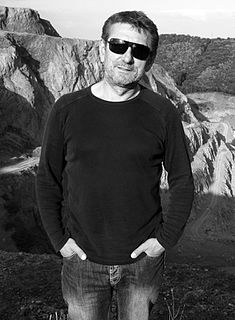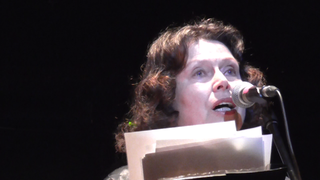
Ledinci also known as Novi Ledinci is a suburban settlement located in the Petrovaradin municipality, one of two municipalities of the city of Novi Sad, Serbia. It is situated in the Autonomous Province of Vojvodina. The village is part of the metropolitan area of Novi Sad.

Veljko Petrović was a Serbian poet, writer, art and literary critic, and theoretician.

Aleksa Gajić is a Serbian comics artist and film director. Gajić is best known as the illustrator of Scourge of the Gods, written by Valérie Mangin, and Technotise, written by Darko Grkinić. Also, he is a well-known illustrator in Serbia, and has published in various magazines, such as Politikin Zabavnik.

Slobodan Peladić was a Serbian painter, sculptor and multimedia artist.

Jovan Đorđević was a Serbian writer, dramatist, Minister of Education and the co-founder of the Novi Sad Serbian National Theatre in 1861, the National Theatre in Belgrade in 1868 and the Academy of Dramatic Art in 1870. He is most famous for writing the lyrics to the Serbian National anthem Bože pravde in 1872. He was also a member of Matica Srpska.
Tomi Janežič is a Slovenian theatre director, professor at the Academy for Theatre, Radio, Film, and Television (AGRFT) in Ljubljana, Slovenia, and a psychodrama psychotherapist. He is also one of the founders and the artistic director of the Studio for Research on the Art of Acting which runs its activities mostly at Krušče Workcenter for Artistic Research, Creation, Residency and Education in Krušče, Slovenia.
The Marinko Sudac Collection, based in Zagreb, Croatia, has been created with a clear collecting strategy based on the region of Central and Eastern Europe, additionally spanning from the Baltic area to the Black Sea. The guiding principle of the Collection is systematic exploration, researching, and promotion of the avant-garde practices which have been marginalized, forbidden, and at times completely negated due to the historical, social and political circumstances. In this context, the Marinko Sudac Collection gives the most complete and comprehensive overview on the art of this region. The Collection starts at 1909, and it show the continuity from the first Avant-Gardes, through neo-avant-garde and New Artistic Practices, ending with the fall of the Berlin Wall. The global uniqueness of the Marinko Sudac Collection is also seen in the kind of media it contains. It contains not only traditional artworks, such as paintings, sculptures, and photographs, but it gives equal importance to documentary and archival material. Great importance is put on these almost forgotten media, which enable research of specific phenomena, artists and the socio-political situation which affected this type of art. The Collection contains a great number of museological units, and it treats the documentary and archival material on the same level as traditional artworks. By examining the units contained in the Marinko Sudac Collection, one can read not only the art scene or the art production of a certain artist, but the full status of the society, the socio-political atmosphere of the region in which this art was created in.

Izidor Cankar was a Slovenian author, art historian, diplomat, journalist, translator, and liberal conservative politician. He was one of the most important Slovenian art historians of the first part of the 20th century, and one of the most influential cultural figures in interwar Slovenia.
Igor Antić is a French-Serbian visual artist.

Mirjana Isaković is a Serbian sculptor and ceramist.
Dragan Malešević Tapi was a Serbian painter. Although by vocation an economist, he is generally considered one of the leading painters of Serbian hyperrealism style.
Laslo Blašković is a Serbian writer and director of the National Library of Serbia.

Jovan Despotović is a Serbian art historian and art critic who lives in Belgrade.

Katalin Ladik is a Hungarian poet, performance artist and actress. She was born in Novi Sad, Kingdom of Yugoslavia, and in the last 20 years she has lived and worked alternately in Novi Sad, Serbia, in Budapest, Hungary and on the island of Hvar, Croatia. Parallel to her written poems she also creates sound poems and visual poems, performance art, writes and performs experimental music and audio plays. She is also a performer and an experimental artist. She explores language through visual and vocal expressions, as well as movement and gestures. Her work includes collages, photography, records, performances and happenings in both urban and natural environments.
Avram Miletić was a merchant and writer of epic folk songs who is best known for writing the earliest collection of urban lyric poetry in Serbian between 1778 and 1781.
Aleksandar Davić was a Serbian film director and screenwriter.

Mirjana Stefanović was a Serbian writer.

Milan Kašanin was a Serbian art historian, art critic, curator and writer. He served as the head of three Belgrade based museums, the Museum of Prince Pavle, the Museum of Contemporary Art and the Gallery of Frescoes.

Draginja Ružić was a Serbian actress, and a member of the ensemble of the Serbian National Theatre in Novi Sad. She is considered to be the first Serbian professional actress.
Vojislav D. Dević is a Serbian researcher, theoretician and practitioner of spatial planning, city planning, architecture and the protection of architectural heritage, ecology, futurology, cartography and geo-strategic projects. He is also a notable peace activist and ecologist.











